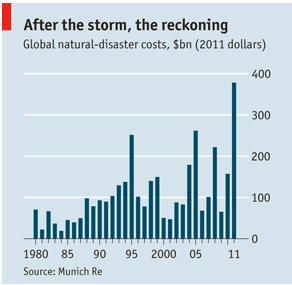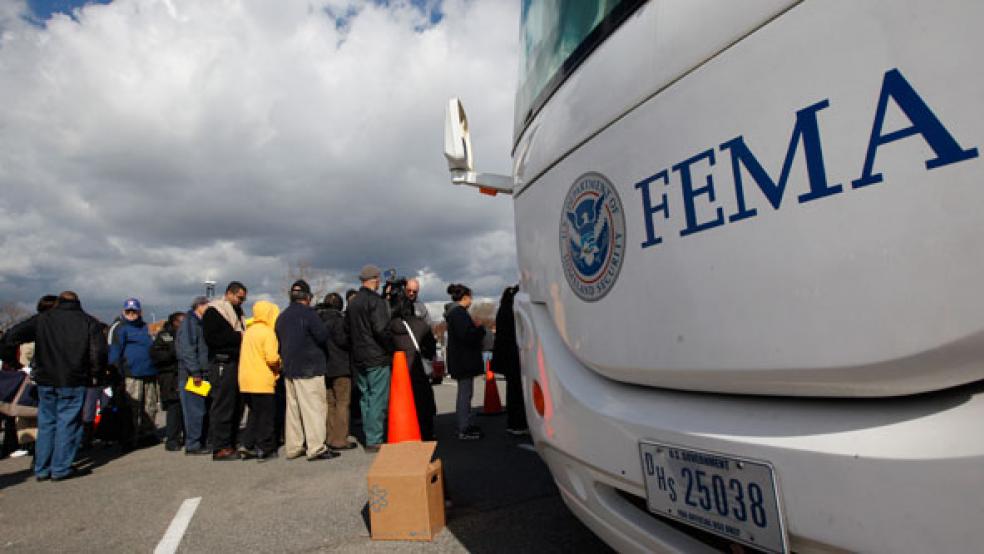At a time when natural disasters are more expensive than ever, the agency responsible for responding to them is under scrutiny for the way it’s spending its money.
A new report from the Government Accountability Office, the congressional watchdog, expresses concern over the Federal Emergency Management Agency’s soaring administrative costs.
Related: FEMA Funding Moves Center Stage in Campaign
No wonder: Since the 1990s, FEMA’s administrative costs have doubled. Between 1980 and 1995, the government spent only 9 percent of its disaster relief money on administrative costs, including expenses like employee salaries, travel expenses and rent at field offices – but between 2004 and 2011, that amount surged to 18 percent.
The increase in administrative costs has outpaced spending on temporary housing subsidies, medical expenses and counseling, noted Fierce Homeland Security, which tracks government developments.
At the same time, disaster spending has become more and more expensive. In the last two decades, natural disaster costs have soared from $100 billion to nearly double that amount, according to Munich-Re, the world’s largest re-insurance agency.
Auditors have previously suggested that FEMA address the spending issues and set goals to reduce the percentage of disaster relief spent on administrative costs. As of July, though, FEMA had not followed up on the GAO’s recommendations.
Related: FEMA Standoff Ends As Disaster Victims Still Suffer
The auditors also raised issues over the government’s increasing response to “smaller” disasters. Presidents have declared an average of 60 “major disasters” per year since 1996—roughly more than one a week, says the GAO. However, many of these involved spending less than $10 million, suggesting they were likely relatively minor events.
When the government declares a given situation a “disaster,” it pays 75 to 100 percent of the response costs. Auditors cautioned that responding to smaller events could impede FEMA’s response to major disasters.
“The damage threshold upon which FEMA makes recommendations on disaster requests should be raised significantly to ensure the availability of federal assistance when truly needed, help stem rising disaster losses, and encourage state and local self-reliance for ‘ordinary’ disasters,” Daniel Sutter, economics professor and senior affiliate scholar at George Mason University, wrote in congressional testimony.
The GAO also flagged FEMA’s preparedness grant programs and said most of the programs “have similar goals, fund similar types of projects, and are awarded in many of the same urban areas.” Concerns about these programs prompted the Obama administration to propose the National Preparedness Grant Program in its budget requests for fiscals 2013, 2014 and 2015.
This would consolidate most of FEMA’s grant proposals to prevent any overlap. Congress, however, has yet to take up any action to consolidate the grant programs.
Top Reads from the Fiscal Times:





